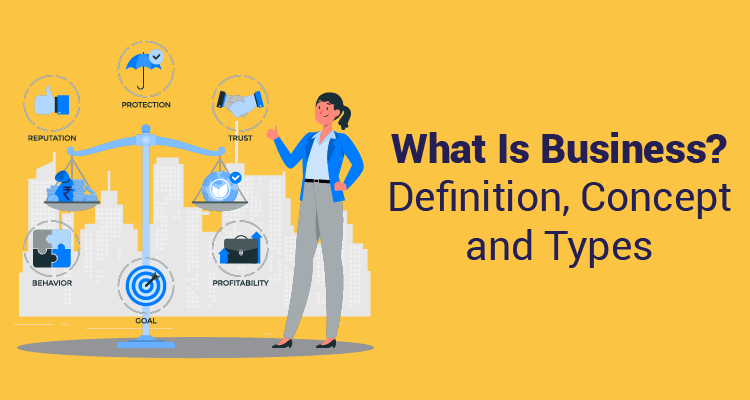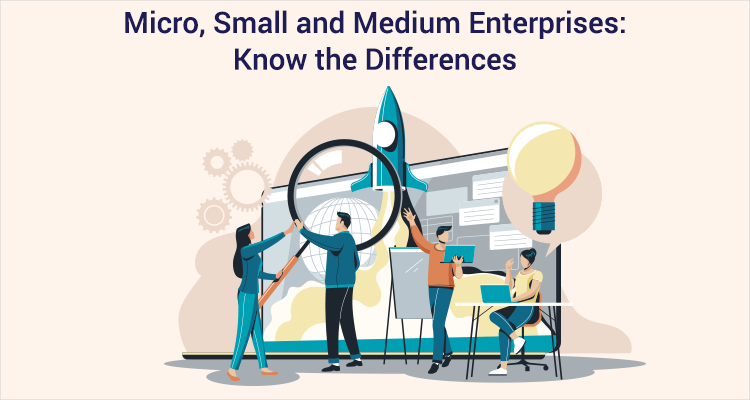Enabling MSME Busineses In India

One of the fastest growing economies in the world, the Indian economy grew by 7.5% in the last financial year. As the political and economic scenario in India continues to be positive, it is expected that the Indian economy will be worth $ 5 trillion by the year 2025, and our GDP will reach a rate of 8.5%. It is also estimated that Micro, Small and Medium Enterprises (MSMEs) will contribute 15% to the economy by 2020. Currently, they contribute around 8% to our overall GDP. But what exactly are MSMEs? Based on the investments received by an enterprise that is engaged either in the production, processing or preservation of goods, or in the providing of services, an enterprise can be defined as Micro, Small or Medium.
The Government of India has recognised the following investment limits for the classification of enterprises:
| Classification of Enterprise | Kind of Work Undertaken | Investment Limits |
|---|---|---|
| Micro Enterprise | Engaged in production, processing or preservation of goods | Investment in plant and machinery is less than Rs 25 lakh |
| Engaged in providing services | Investment in equipment is less than Rs 10 lakh | |
| Small Enterprise | Engaged in production, processing or preservation of goods | Investment in plant and machinery is more than Rs 25 lakh but less than Rs 5 crore |
| Engaged in providing services | Investment in equipment is more than Rs 10 lakh but less than Rs 2 crore | |
| Medium Enterprise | Engaged in production, processing or preservation of goods | Investment in plant and machinery is more than Rs 5 crore but less than Rs 10 crore |
| Engaged in providing services | Investment in equipment is more than Rs 2 crore but less than Rs 5 crore |
What the government is doing for MSMEs
We cannot ignore that micro, small and medium enterprises contribute greatly to our economy. The Government of India has realised this, and they have taken the following steps to help MSMEs function smoothly in the country:
- Collateral Free Borrowing: To facilitate the flow of credit to the MSME sector without the need for collaterals or third party guarantees, the Government of India, together with SIDBI set up the Credit Guarantee Fund Trust for Micro and Small Enterprises (CGTMSE). If an MSE unit avails of collateral-free credit facilities, and is unable to discharge its liabilities to the lender, the Credit Guarantee Scheme (CGS) will make good the loss incurred by the lender, up to 85% of the outstanding amount in default. In this way, the CGS works to reassure the lender that their collateral-free loans will not be taken advantage of, and urges them to help finance MSE units.
- Technology Upgradation: The government has set up a Credit Linked Capacity Subsidy Scheme (CLCSS) to help micro and small enterprises with technological upgrades. Under the scheme, eligible MSEs are being provided with a 15% subsidy (up to a maximum of Rs 15 lakh) to upgrade their technology. This is an improvement to the earlier scheme that only allowed a 12% subsidy, up to a maximum of Rs 4 lakh only.
- Cluster Development: The Ministry of MSMEs has implemented the Micro and Small Enterprises Cluster Development Programme (MSE-CDP). Under this initiative, the ministry has set up Common Facility Centres and provides support to MSMEs for Diagnostic Study and Soft Interventions like general awareness, counselling, motivation and trust building, exposure visits, market development including exports, participation in seminars, workshops and training programmes on technology upgradation.
- Skill Development: The MSME Ministry organises a number of training programmes through its various organisations for self-employment as well as wage employment. These training programmes are focused on promoting self employment throughout the country, and provide trainees with the necessary skills and information they would require to establish their own micro or small enterprises. These programmes run with the help of a web-based system where trainees can provide real-time feedback. The programmes currently being offered under this initiative are:
- Two-week Entrepreneurship Development Programme (EDP)
- Six-week Entrepreneurship Skill Development Programme (ESDP)
- One-week Management Development Programme (MDP)
- One-day Industrial Motivation Campaign (IMC)
- Tool Rooms: The Ministry of MSMEs provides the enterprises with tool rooms that are equipped with state-of-the-art machinery and equipment. These tool rooms are engaged in the designing and manufacturing of quality tools that are necessary for the production of quality products, and to improve the competitiveness of MSMEs in the national and international markets. The placements of trainees trained in these tool rooms is more than 90%.
- Energy Conservation in Manufacturing: The Technology and Quality Upgradation Support (TEQUP) scheme to Micro, Small and Medium Enterprises was set up to enhance the competitiveness of the MSME sector through energy efficiency and product quality certification. The scheme provides a capital subsidy of 25% to registered MSME units, encouraging them to adopt energy efficient technology and thus improve their quality of manufacturing. By doing so, MSMEs are able to curtail their energy costs, and can reduce their production cost, which in turn increases their competitiveness.
- Quality and Design of Products: The Product Quality Certification under the TEQUP scheme encourages MSMEs to acquire product certification licenses from national and international bodies. The government then provides the enterprises with a subsidy towards the expenditure incurred by them to obtain the product certification licenses. To help improve the design of products, the Ministry has implemented the Design Clinic Scheme for Design Expertise. The clinic creates a dynamic platform to provide expert solutions to real-time design problems faced by MSMEs, and add value to existing products.
- Business Incubators: The government provides support to MSMEs for entrepreneurial and managerial development through the setting up of business incubators. The main idea behind the setting up of these incubators is to nurture innovative business ideas which can be commercialised within a year. Under the scheme, financial assistance of 75% to 85% of the project cost (up to a maximum of Rs 8 lakh per idea/unit) is provided to Business Incubators (BIs). The BIs are also eligible to avail Rs 3.78 lakh for infrastructure and training expenses for the incubation of 10 ideas. Any individual or Micro and Small Enterprise (MSE) that has an innovative business idea at near commercialisation stage can approach an approved BI under this scheme.
- Intellectual Property Rights: Under the National Manufacturing Competitiveness Programme (NMCP), to enhance the competitiveness of the SMEs sector, a scheme to build awareness of Intellectual Property Rights (IPR) has been implemented. The objective of the scheme is to enhance awareness of MSMEs about their IPRs, allowing them to take the necessary measures to protect their ideas and business strategies.
- MSME Credit Ratings: The Ministry has implemented the Performance & Credit Rating Scheme to provide a trusted third party opinion of the capabilities and creditworthiness of the MSEs. This will help create awareness amongst the enterprises about the strengths and weaknesses of their existing operations, and provide them with the opportunity to improve and enhance their organisational strengths and credit worthiness. By doing so, they will be able to access credit at cheaper rates and on easier terms. Ratings under the scheme are being carried out through empanelled rating agencies i.e. Credit Rating Information Services of India Limited (CRISIL), Credit Analysis & Research Limited (CARE), Onicra Credit Rating Agency of India Ltd. (ONICRA), Small and Medium Enterprises Rating Agency of India Ltd. (SMERA), ICRA Limited, and Brickwork India Ratings.
The way forward for MSMEs
Currently, there are around 46 million Micro, Small and Medium Enterprise sector enterprises across various industries, employing 106 million people in India. The sector accounts for 45% of India's industrial output, and 40% of exports. To be able to meet the needs of India's large population, the country needs to create around 15 million jobs every year, and the MSME sector can contribute significantly to employment generation and development of the economy. With the current government initiatives in place that revolve around helping enterprises in the MSME sector, and the investments being pumped in by both foreign and domestic enterprises, we can expect MSMEs to emerge as the backbone of the Indian economy in the near future.
India Infoline Finance Limited (IIFL) is an NBFC, and is a reputed name when it comes to financial solutions such as mortgage loans, gold loans, capital market finance, healthcare finance, and SME finance.
Disclaimer : The information in this blog is for general purposes only and may change without notice. It does not constitute legal, tax, or financial advice. Readers should seek professional guidance and make decisions at their own discretion. IIFL Finance is not liable for any reliance on this content. Read more



